The re -hypothecation protocol is designed to increase returns on staking assets by supporting external systems, commonly known as Active Verification Services (AVS). These protocols have spawned billions of dollars in Liquidity Redemption Tokens (LRT), which represent the amount deposited in the recollateralization protocol.
Interest in restaking increased during the first half of 2024, but has now leveled off - total ETH pledged volume in USD on the restaking protocol is down 38% from its peak in June. Stripping out the volatility of ETH-USD, staked ETH units have remained stable over the same period, with very limited net new inflows.
There are currently 23 AVS, and liquidity re-hypothecation accounts for 75% of the total TVL.
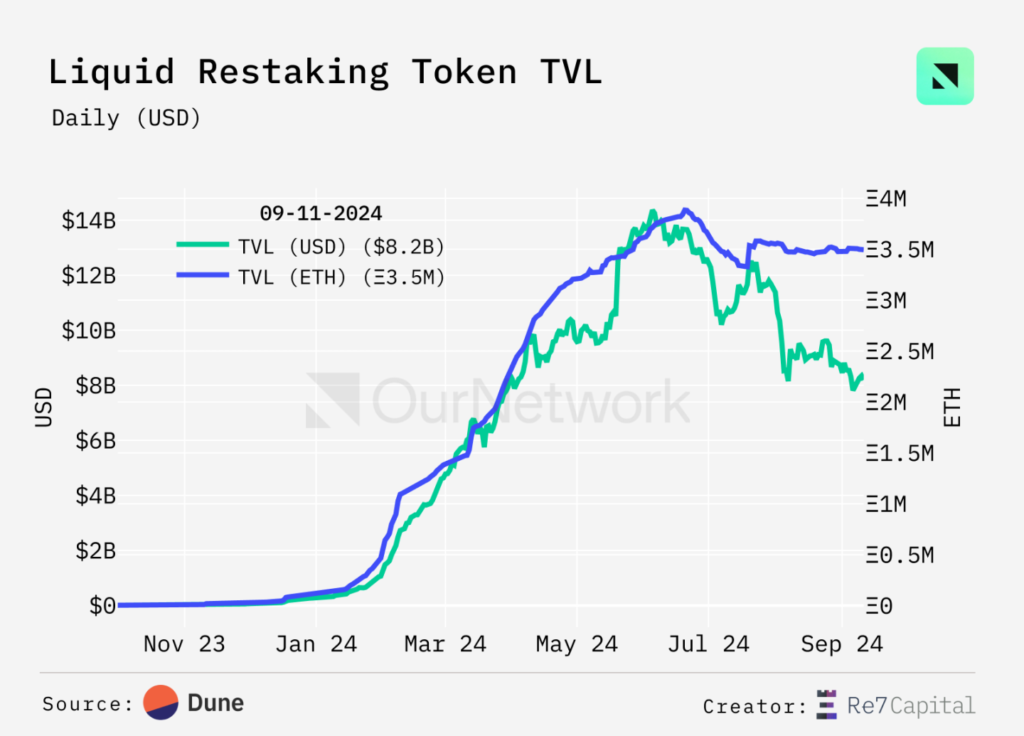
Eigenlayer accounts for the bulk
Eigenlayer is the leading restaking protocol with 84% market share. Emerging protocol Symbiotic ranks second with 12%, while Karak ranks third with 4%.
As of September 12, Eigenlayer has experienced a net outflow of -94,000 ETH in the past month, approximately $222 million. Karak also saw an outflow of -14,000 ETH and approximately $33 million during the same period. Symbiotic was the only protocol to see a positive change, growing by +253,000 ETH, or approximately $598 million.
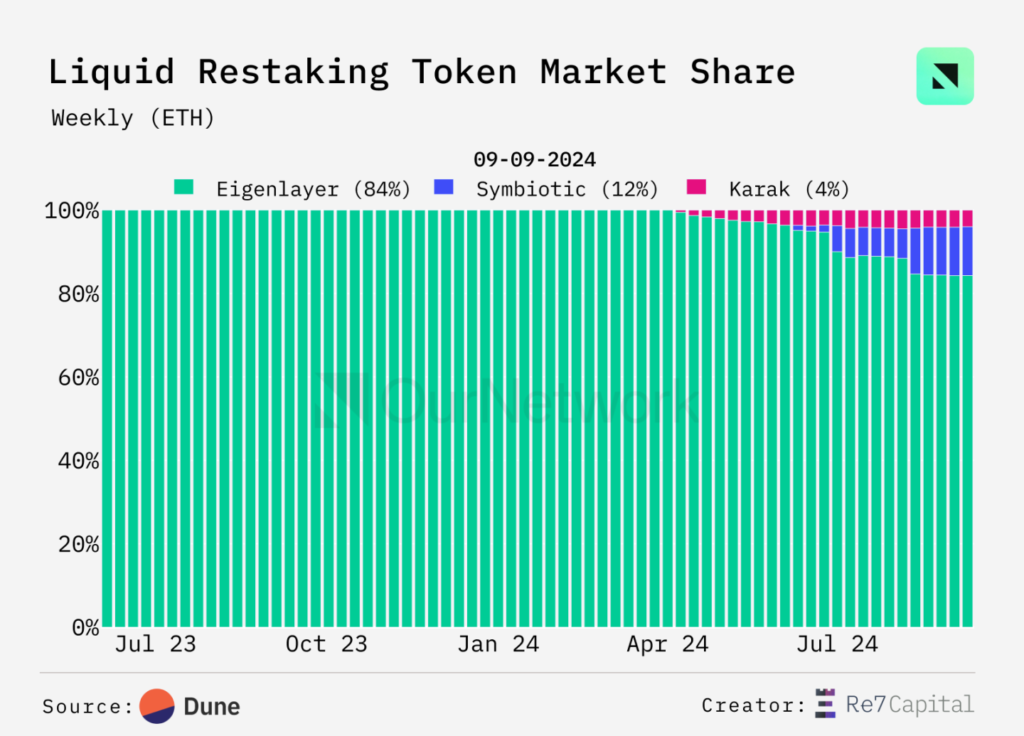
Users can deposit directly to Eigenlayer using ETH and LST, or indirectly deposit through liquidity re-pledge projects like Ether.fi.
Liquidity re-pledge protocols mint a liquid token called LRT that represents a claim on assets re-hyped in protocols like Eigenlayer – Ether.fi’s eETH is the largest LRT powered by Eigenlayer, with 1.96 million issued, The market capitalization reaches US$804 million. Puffer's pufETH issued 515,000, and Renzo's ezETH issued 363,000.
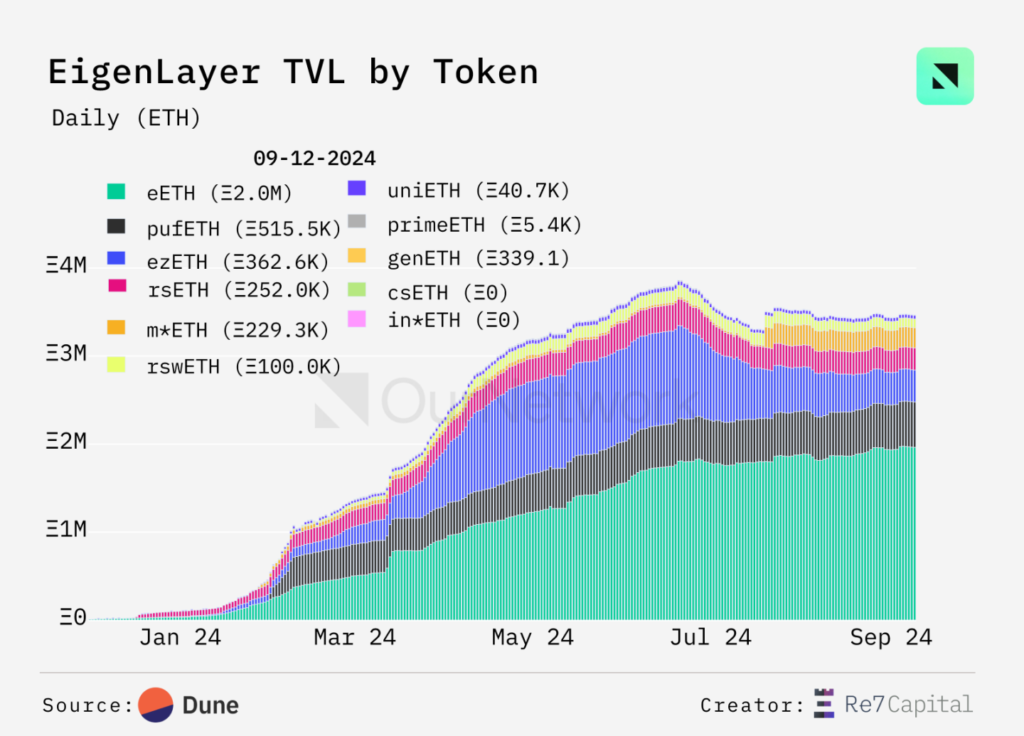
The number of liquidity re-hypothecaters has dropped by 90% from a peak of 10,000 in February. Of the remaining ~1,000 individuals, the majority (more than 95%) operate through Ether.fi and Puffer.
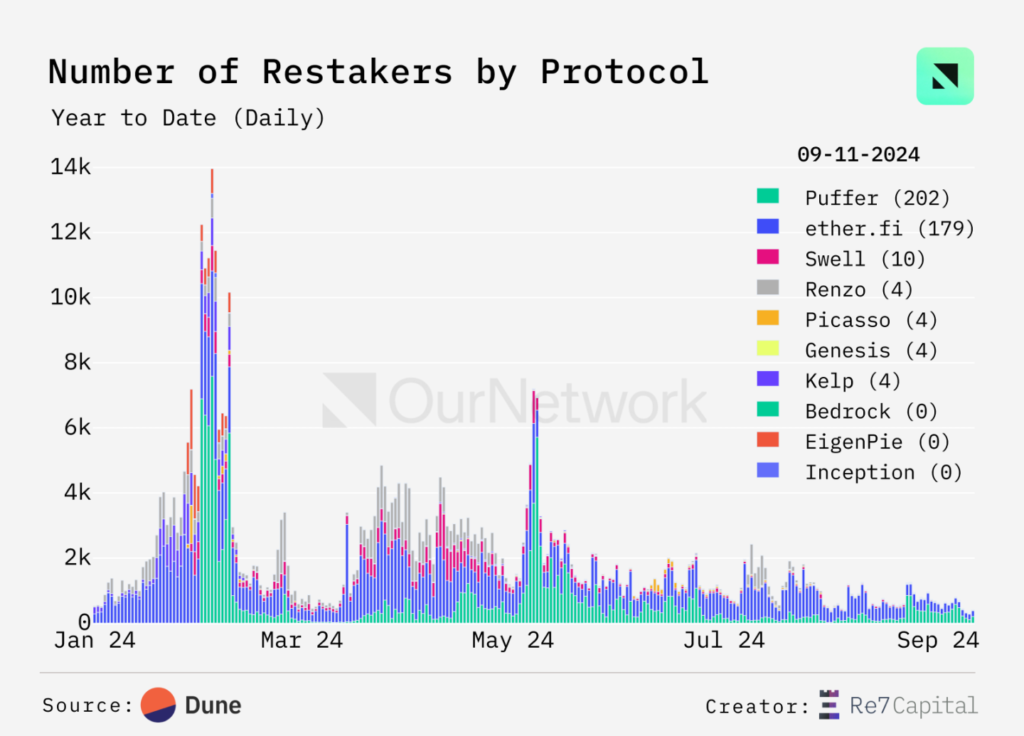
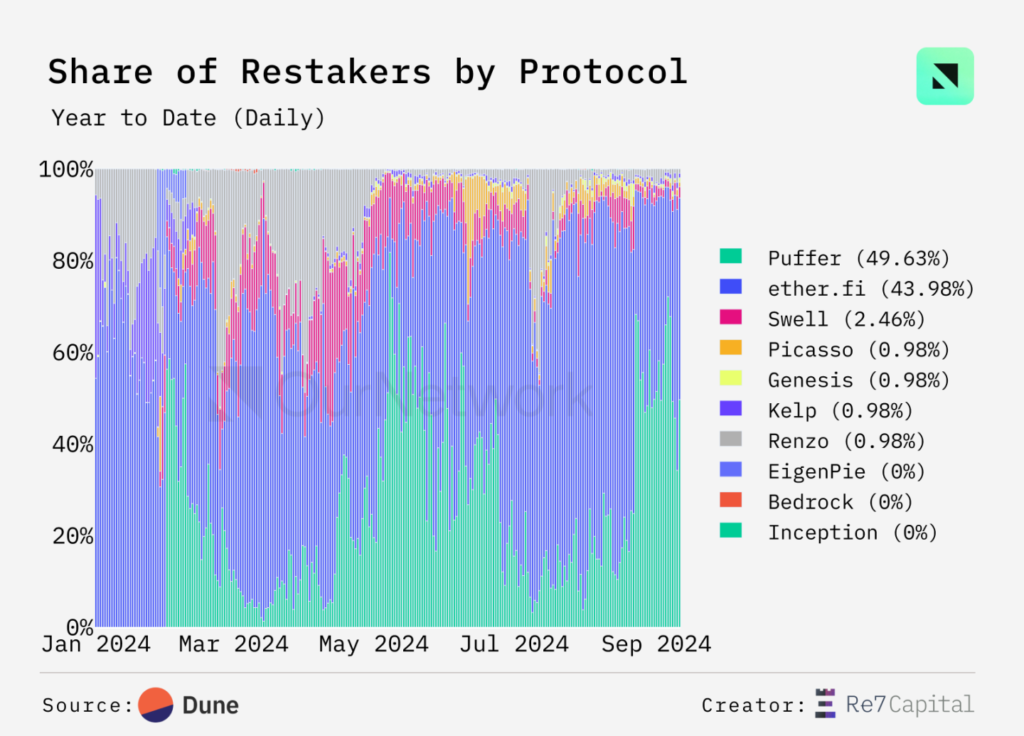
Transaction Highlights: This is the first transaction to fund Kiln, who provides services as an AVS operator (AVS operators use re-hypothecated assets for verification). Today, this address has become one of Eigenlayer's top operators, with over 39,000 ETH and 5,400 delegators.
Ether.fi
Lending protocols have been the biggest beneficiary of weETH/eETH flows over the past month
Over the past month, the lending protocol has experienced the highest net inflows of weETH/eETH (the leading LRT) from Ether.fi, totaling $252 million in inflows. During the same period, users invested $52 million in bridging protocols and $39 million in EOAs and Safes.
The largest net outflow stemmed from re-hypothecation, which fell by $52 million, mainly due to a significant outflow of $61 million on August 15. This coincides with the launch of Ether.fi’s alternative LRT eBTC, with supply likely being directed to Symbiotic’s eBTC/weETH, which may explain some of the outflows.
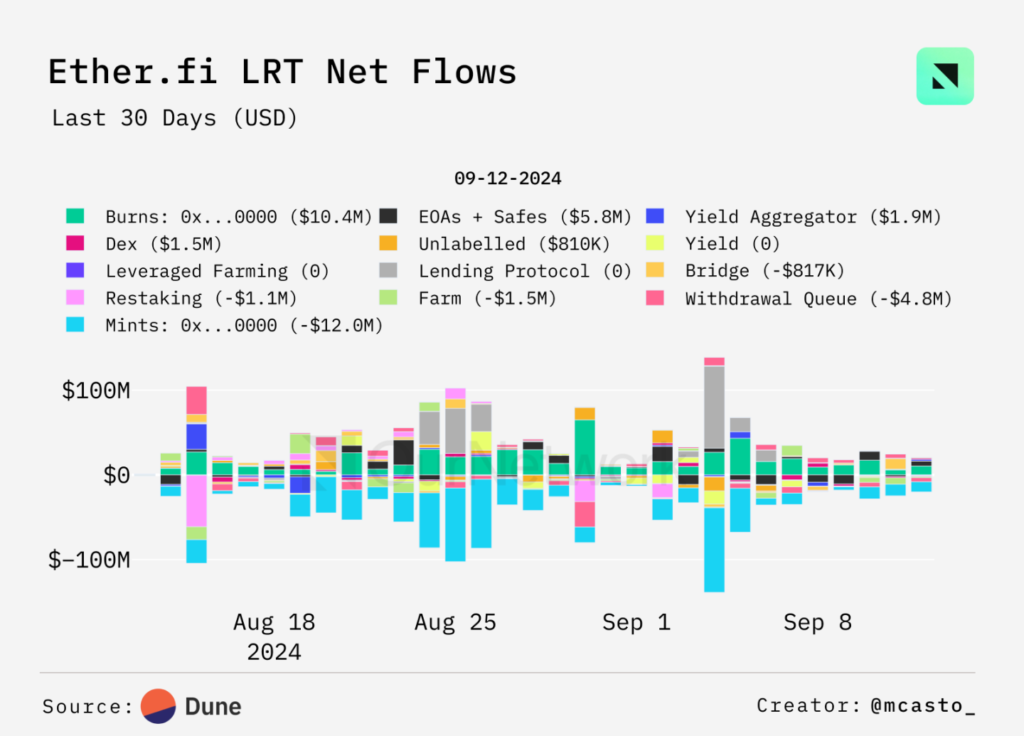
Aave has seen the largest growth in weETH supply flows so far this year, growing from 1.4% market share when deposits opened in mid-April to 35% currently. This growth is primarily due to users engaging in loopback strategies and strong demand to borrow stablecoins using weETH as collateral.
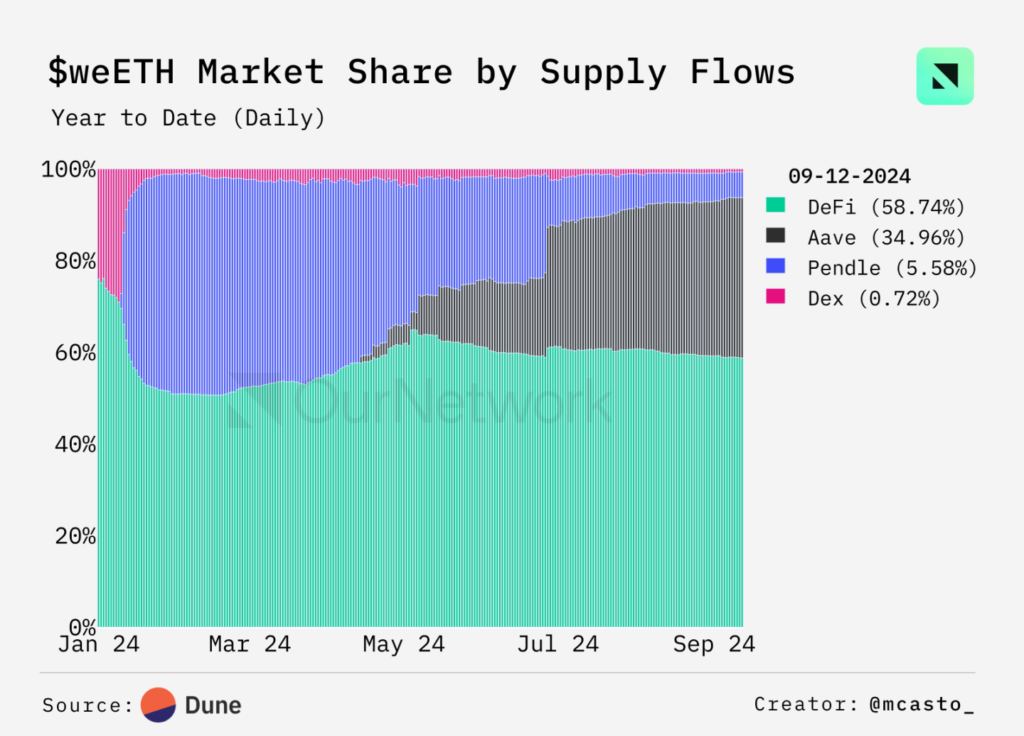
In the DEX ecosystem, the TVL of Ether.fi's governance token ETHFI has recently increased on Uniswap v3, mainly due to the transfer of liquidity on Curve to Uniswap in early August. The move was driven by the Ether.fi team, who moved fiscal purchased liquidity to Arrakis on Uniswap v3.
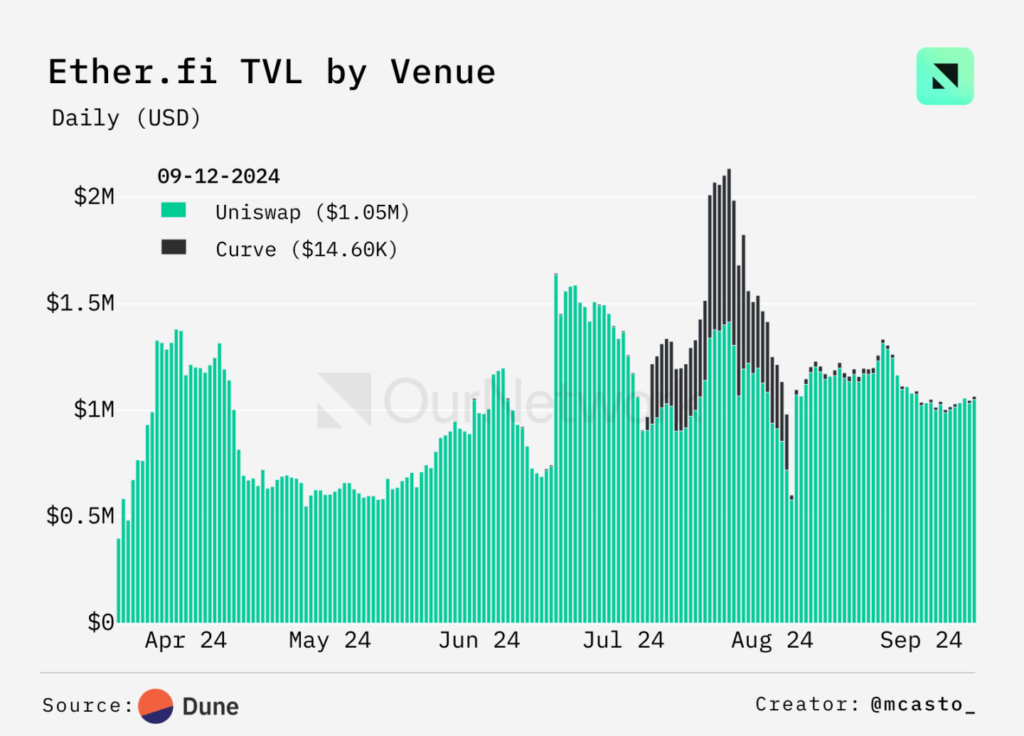
Deal Highlights: The deal is an injection of liquidity into Arrakis’ automated liquidity solution that had previously been drawn from Curve. This is the second largest liquidity injection in the pool’s existence. Additionally, 80 ETH was injected into the transaction, which was worth $409,000 at the time. After this transaction injected liquidity, almost all ETHFI's DEX liquidity passed through the Uniswap v3 pool.
Swell
Swell's total locked swBTC value has exceeded $30 million
While most of the discussion about re-collateralization has centered around the ETH LRT, Swell’s new LRT, swBTC, has been gaining attention recently. Swell’s new product offers users the opportunity to earn potential heavy- staking rewards on Ethereum’s top three heavy-staking platforms – EigenLayer, Symbiotic, and Karak. In just 10 days, the total locked value of swBTC exceeded $30 million, with more than 560 independent depositors participating in deposits. As BTC liquidity becomes an ongoing trend, the increase in BTC LRT may serve as a positive on-chain catalyst.
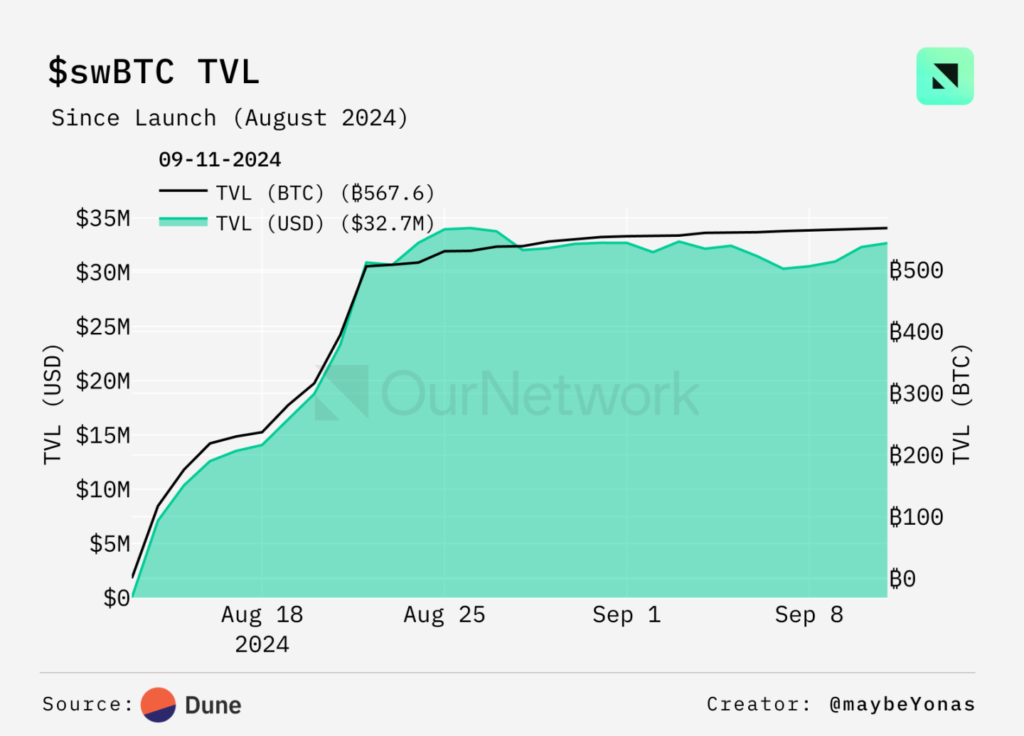
About a month after going live, a portion of swBTC’s supply has flowed into key DeFi protocols such as Curve and Morpho, which account for approximately 8% of the total supply. In addition, Swell is developing a Layer 2 platform, and users have injected 68% of the swBTC supply into the contract of the extension platform to facilitate its listing.
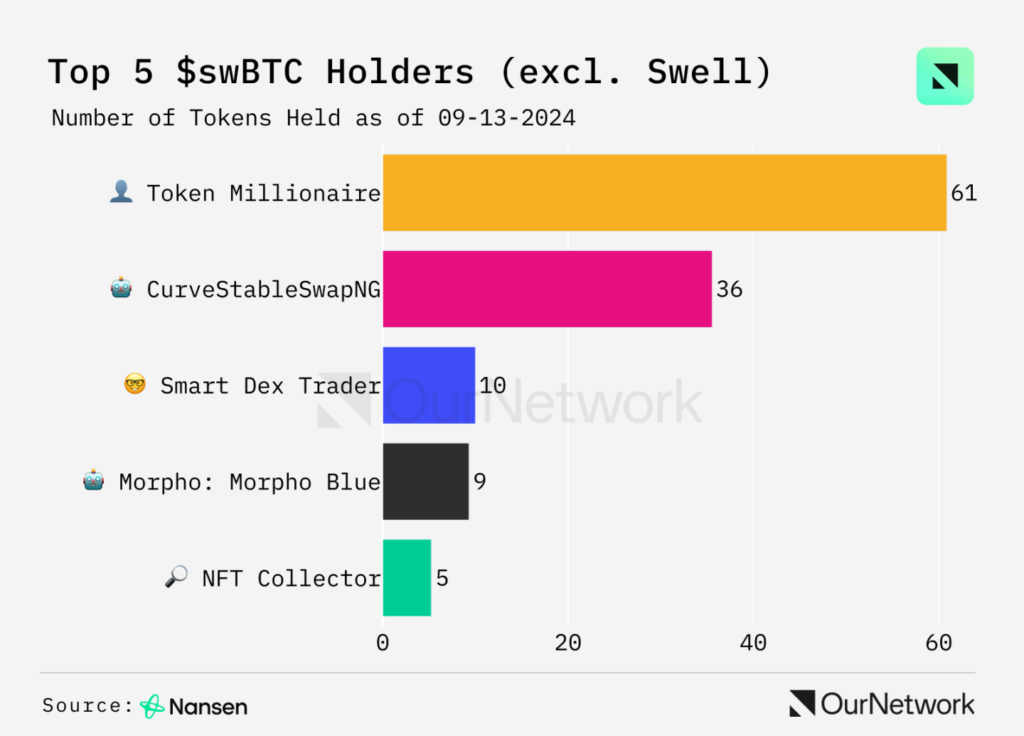
Users continue to express high interest in potential uses by depositing funds into Swell's Layer 2 contracts. Although Swell announced that the snapshot recording of the airdrop was complete, there were still approximately 460,000 ETH and over $1 billion in funds deposited. The expansion kit solution is scheduled to be officially launched by the end of the fourth quarter.
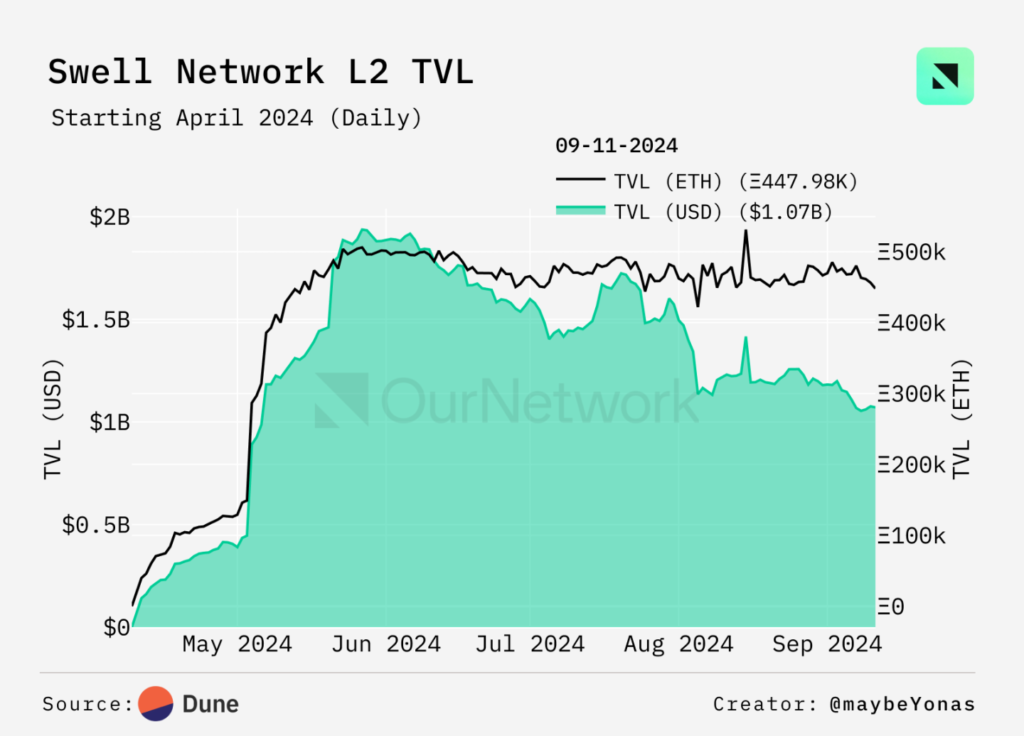
Transaction Highlights: While examining swBTC usage among some early adopters, this wallet deposited 100 swBTC into the Swell L2 contract, worth over $5.9 million. According to the relevant wallet, this address may belong to Amber Group, a well-known asset management company with more than 3,000 institutional clients.
Symbiotic
Symbiotic’s TVL exceeds $1.5 billion, new tokens added
Symbiotic's TVL, as the second largest heavily pledged protocol after Eigenlayer, has exceeded $1.5 billion, adding other assets such as BTC, Ethena, and sUSDe.
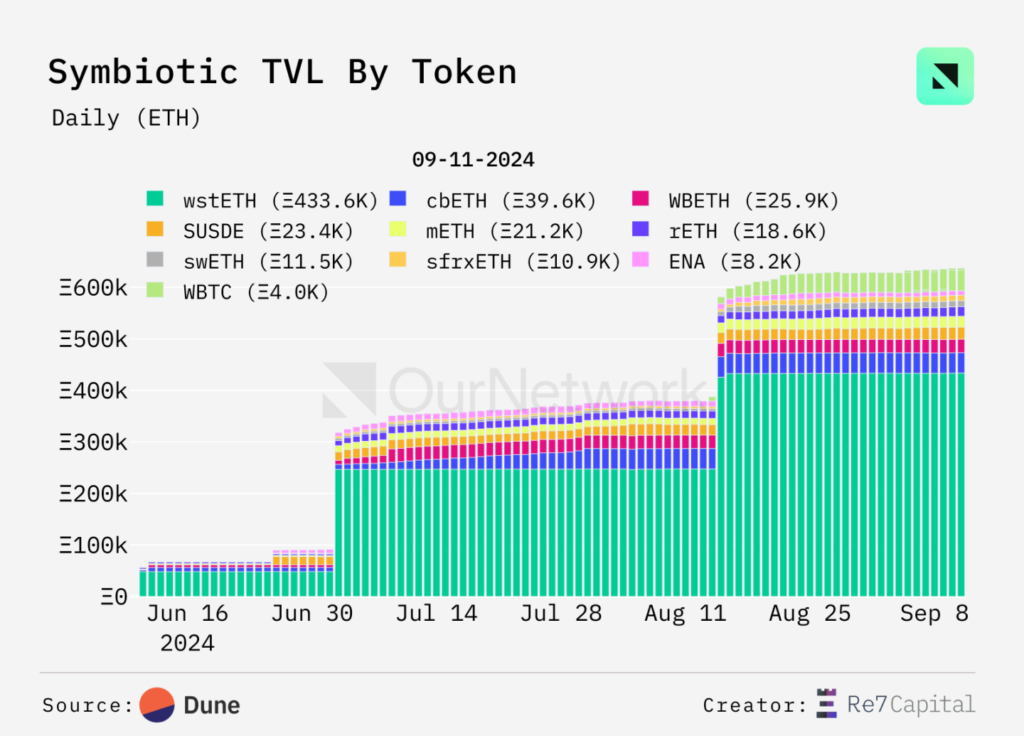
Pools like Re7LRT account for over 70% of depositors, reflecting the growth of liquid heavily collateralized tokens on the Symbiotic protocol.
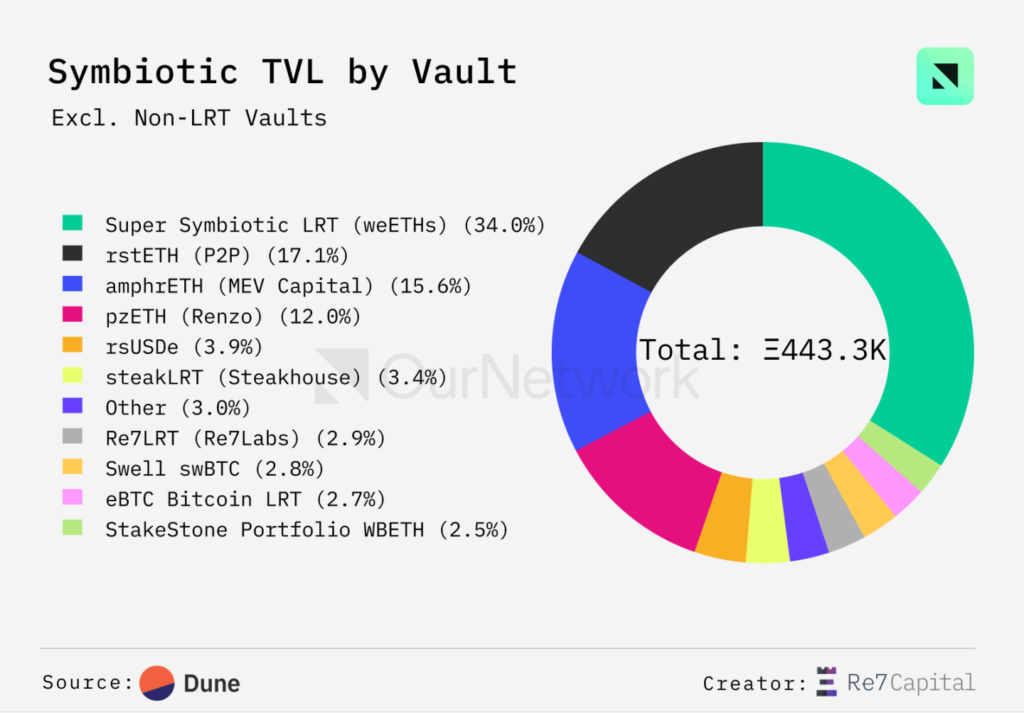
BTC heavy staking has officially begun, and Symbiotic is one of the major platforms for depositing BTC. Over $100 million in BTC was deposited in the past month, with Re7, Ether.fi, and Swell’s BTC LRT driving this explosive growth.
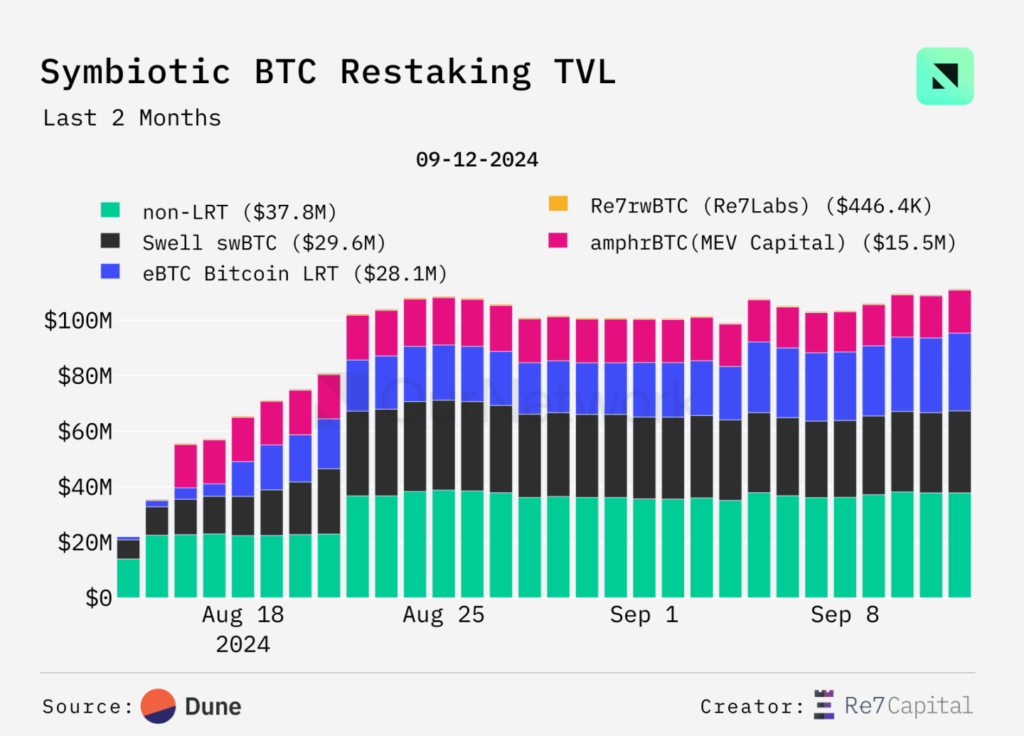
Trading Highlights: Income trading with Re7LRT remains active. The big trader set a fixed income of over 300 ETH through Pendle, a yield splitting protocol with expiry dates in September and December for Re7LRT.
Karak
Karak’s ETH TVL stabilized at 280,000 for nearly 3 months
Karak is the third-largest heavily collateralized protocol by total value locked (TVL), holding a steady 280K ETH in deposits but has not seen significant new inflows over the past three months. This is likely due to difficult market conditions and the emergence of competitors like Symbiotic, which launched later than Karak but now attracts three times the ETH of Karak. To keep up, Karak accelerates the introduction of new assets
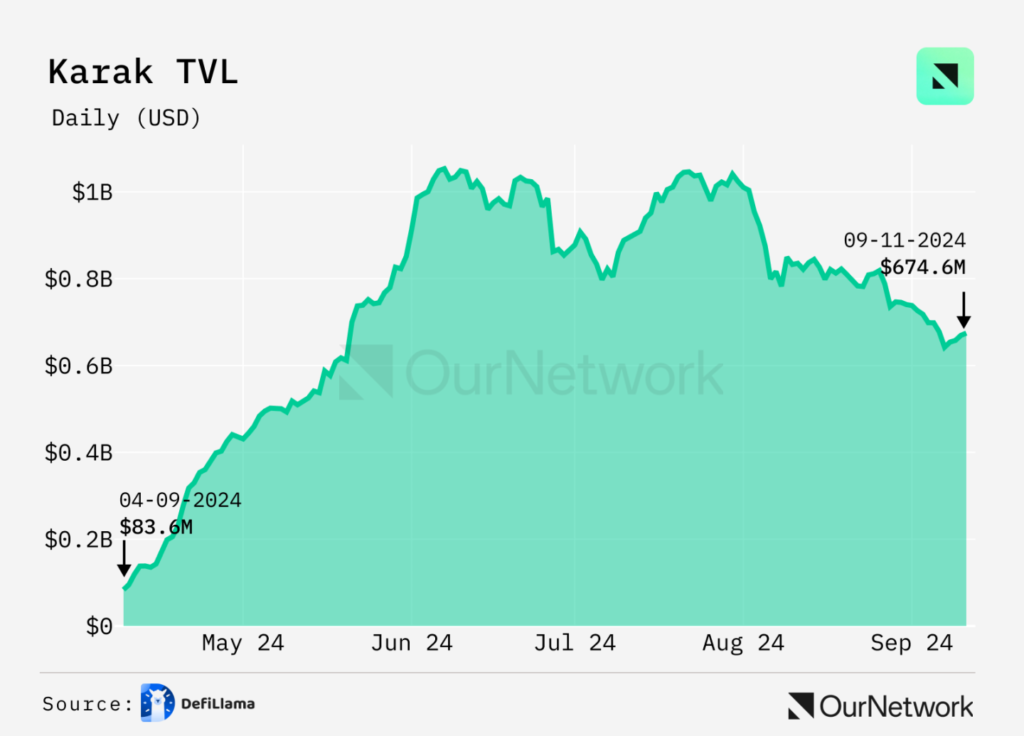
In the past 7 days, users have withdrawn 6,025 ETH from Karak, showing a lack of growth compared to competitors. Users may choose to withdraw funds because Karak's points program has become less attractive.
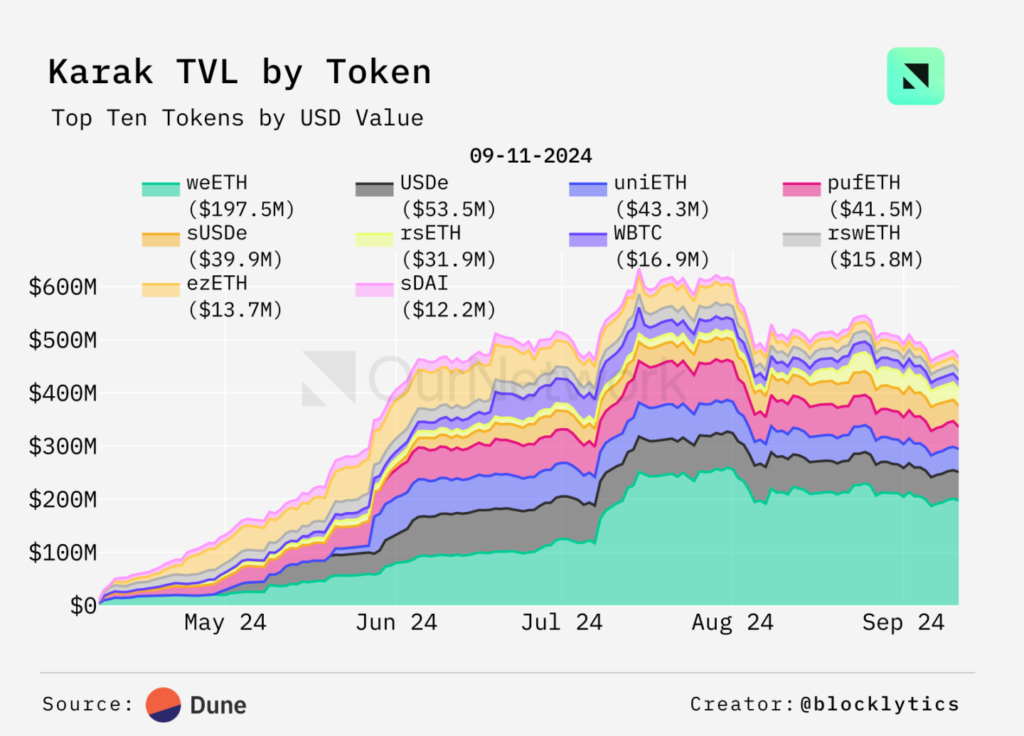
The pie chart shows that EigenLayer's LRT and Pendle's LRT derivatives account for an important 61% of Karak's total locked value (TVL). Given this significant dependence on a competitor's assets, Karak may need to explore new strategies to mitigate the risks associated with such dependence.







